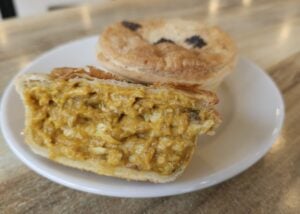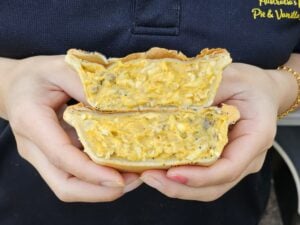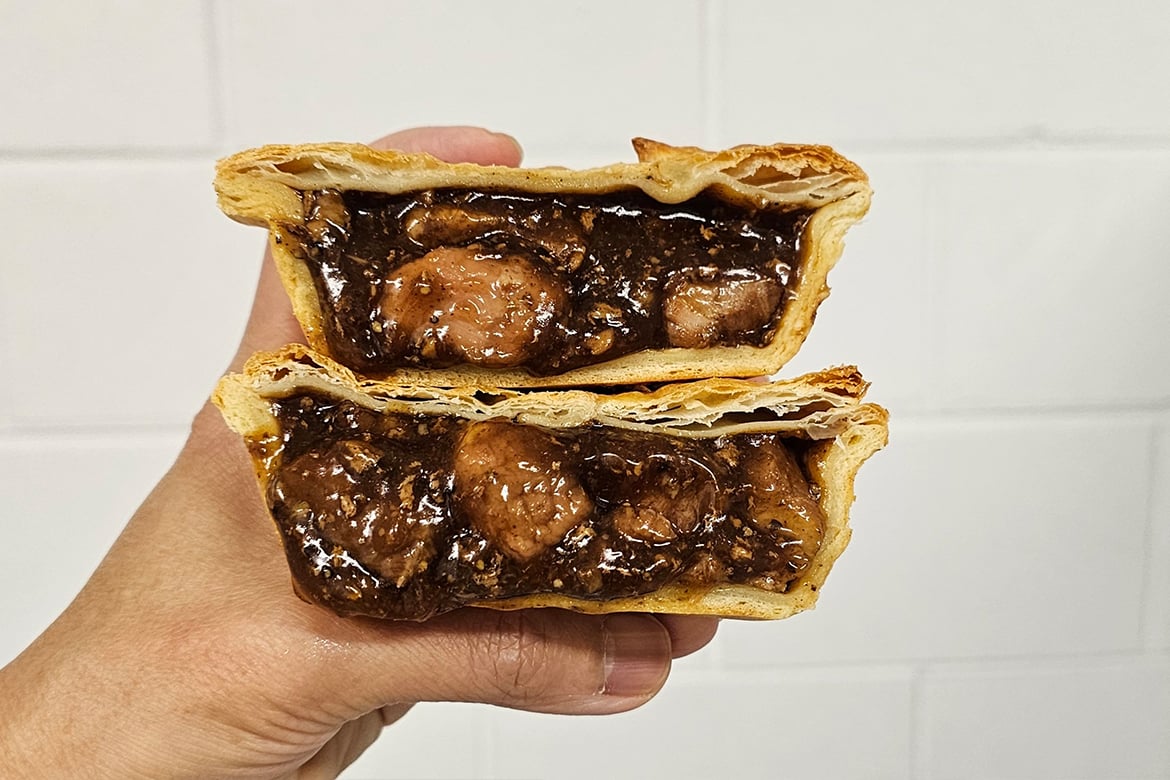The pie is an Aussie bakery classic, served around the country with and without sauce, sometimes accompanied by gravy, peas, and potato. But is there an optimal temperature to serve a pie at? And what’s the best strategy for storing cooked pies that aren’t going to be eaten straight away? Baking Business sat down with three pie experts from across the industry to find out what goes into the perfect pie.
Something that must always be kept in mind when making any kind of food for commercial consumption is the food safety requirements that ensure consumers are kept safe. According to Food Standards Australia New Zealand, the minimum requirement for hot foods, which covers pies and a lot of other baked treats, is that they should be served at temperatures hotter than 60°C.
At and above this temperature, the bacteria that cause food poisoning do not grow and will start to die, making foods safe for consumption.
However, Chef George Clegg from Le Cordon Bleu Australia says that at this temperature, the mouthfeel and experience of eating a pie can be diminished, even though it is technically safe to eat.

Chef George Clegg
Image: Le Cordon Bleu Australia
“At that temperature, the dough will often go a little bit soggy. So somewhere from 72°C into the 80s gives you a good temperature, where it’s safe to eat microbiologically, as well as being warm enough but not too hot that it’s absolutely scalding,” he says.
“It’s about picking that sweet spot between hot enough that you’ve got a nice crust and not too hot that it’s scalding or too cold that it’s unsafe to eat.”
Something else to keep in mind is the fact that the temperature that a pie is served at can affect the way it tastes.

“[In] something too cold, the fat—the fat from the pastry, the fat from inside the mix—will congeal in your mouth a lot more, which may give you a feeling in your mouth that isn’t nice,” George says.
Not only does the temperature of the pie affect the mouthfeel, the receptors in our mouths that detect certain flavours, especially salt, respond more strongly to warmth than to cold. This means that how hot a pie is served can actually affect the way that it tastes.
“Your mouth, your taste buds, also react to different temperatures in relation to seasoning as well. Something that is cold, that is served to you too cold, that is supposed to be hot is going to taste different,” George says.
“Things like salt and pepper don’t stand out as much in colder food, which is something we need to think about as chefs when we’re cooking something that’s going to be served cold.”
Interestingly, especially for the Australian populace, there is little impact of extraneous factors such as the weather on the experience of eating a pie.
Although the weather outside doesn’t have any large impact on whether or not people are eating pies or what sort of pies they get, Ryan Khun from Country Cob Bakery (which recently won the title of Australia’s Best Pie at the Baking Industry Trade Show) says there is some variation in temperature that is necessary when it’s colder outside.
“I’d say the optimal temperature would be around 70°C during summertime and around 75°C in wintertime,” he says.

Left to right: Ryan and Chan Khun, Country Cob Bakery
Something else that affects the experience of eating a pie is the use of a pie warmer after it has been cooked. When deciding what temperature a pie warmer needs to be set at, says Ryan, it is worth keeping in mind how full it is.
“We have two pie warmers in each of our stores,” he says.
“They are set to 85°C when they’re fully loaded and 75°C when they are half loaded. This is the same in summer.
“All [of our] pies are put in the same warmer and at the same temperature.”
Stewart Latter, who spends his time judging baking competitions around the country in between running Bread Basket in the Hunter Valley, says that he prefers to sell (and eat!) pies that have been heated to 60–65°C. This, he says, can be achieved in a pie warmer, but that isn’t always the best option.
 Stewart Latter
Stewart Latter
Image: East Coast Photography
“We find that it’s better to heat [pies] up in a baking oven first and then bring them up to temperature and put them into your pie warmer.
“Don’t put them in your pie warmer cold, because it’s at a higher risk as it goes from cold to the right temperature. That could depend on the pie and could vary from pie warmer to pie warmer, but sometimes it could be an hour and a half to two hours before it’s actually reaching that [safe-to-eat] 60°C,” says Stewart.
“We have our pies in for 15 minutes in our deck oven at 200°C, and that brings them up to temperature, then we can integrate them into the pie warmer so they stay at that 60-odd°C.”
This temperature needs to be consistently maintained in order for the pies to remain at a safe temperature. However, it is unwise to keep food in hot holding equipment (e.g., a bain marie or pie warmer) for too long, as this will affect its integrity.
“Most foods do, over time, deteriorate,” says Stewart.
“It’s a bit of a juggling act. Ideally you want the pies turning over on a reasonably regular basis, but, if there’s too much fat in the filling, or if the pastry hasn’t been done properly, they can go soft and soggy.”

The efficacy of a pie warmer can also be affected by the presence of a fan mechanism, and the strength of this fan if there is one, Stewart says. While a fan in the context of an oven is almost always not going to adversely affect the quality of a pie, pie warmers with fans come with the possibility of drying out a ruining what could otherwise be an excellent pie.
“Most good pie warmers have fans to circulate the heat,” says Stewart.
“If the [fan’s] too forceful, it can actually dry up the pie and make it really crumbly.”
While a lot of different things go into the science behind making a really good pie, something that remains true is that it is still, after nearly 200 years in circulation, a true Aussie classic. And this doesn’t look likely to change any time soon.
Main image and pie images throughout: Country Cob Bakery







COMMENTS